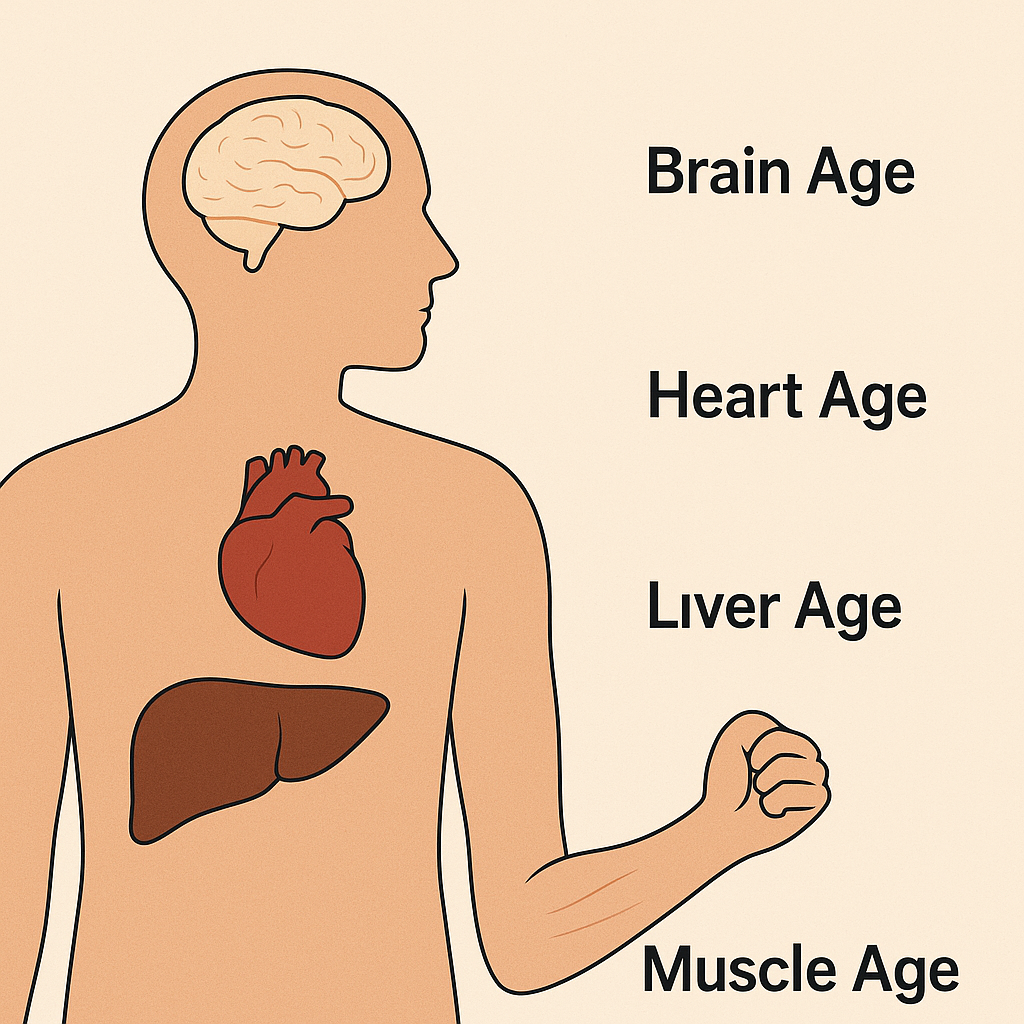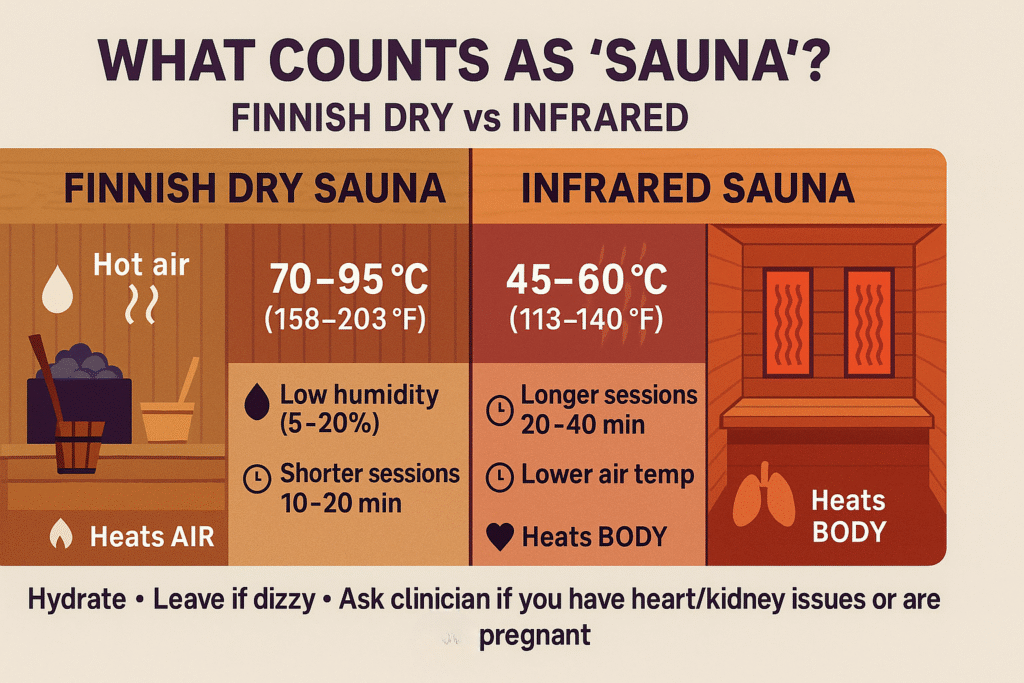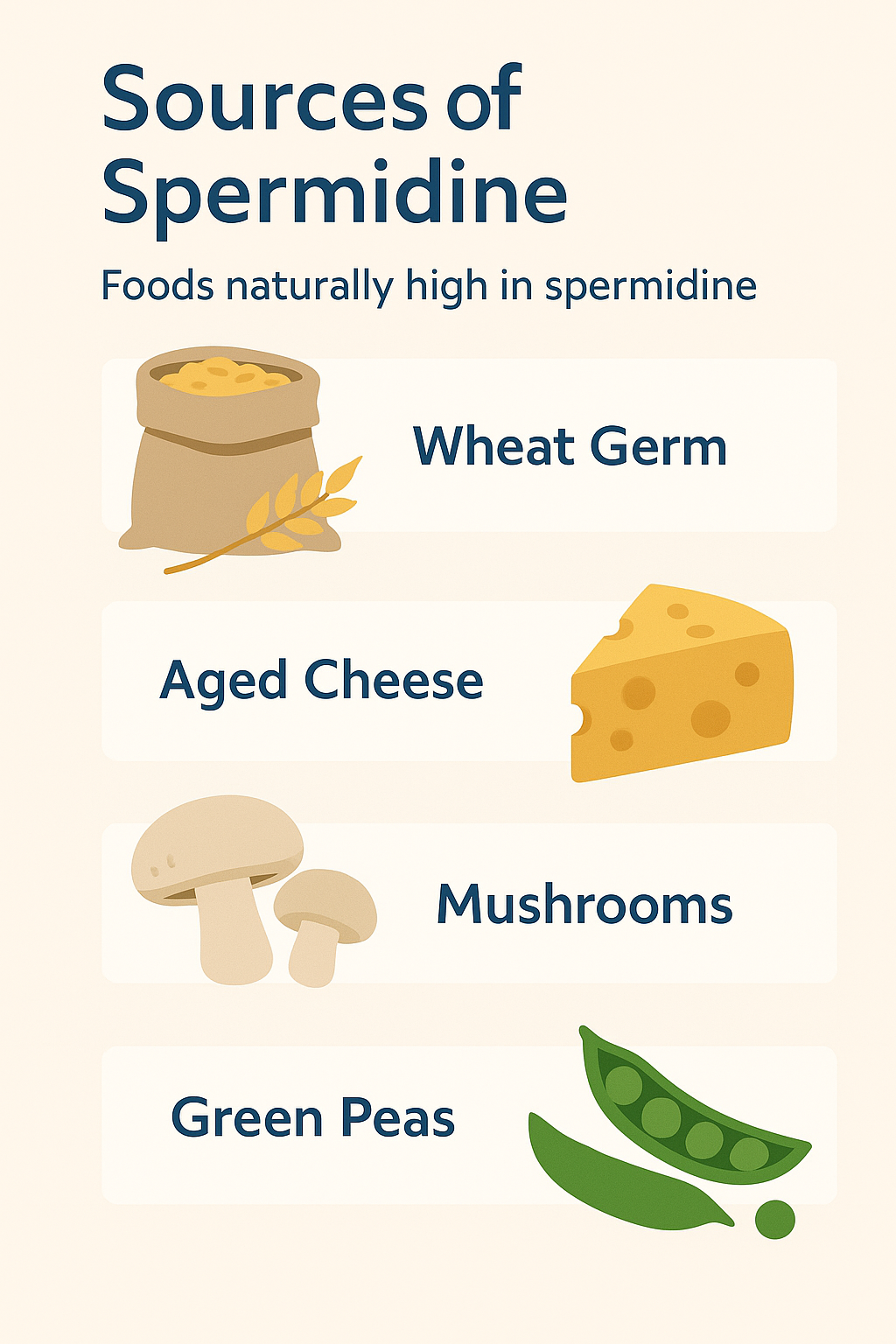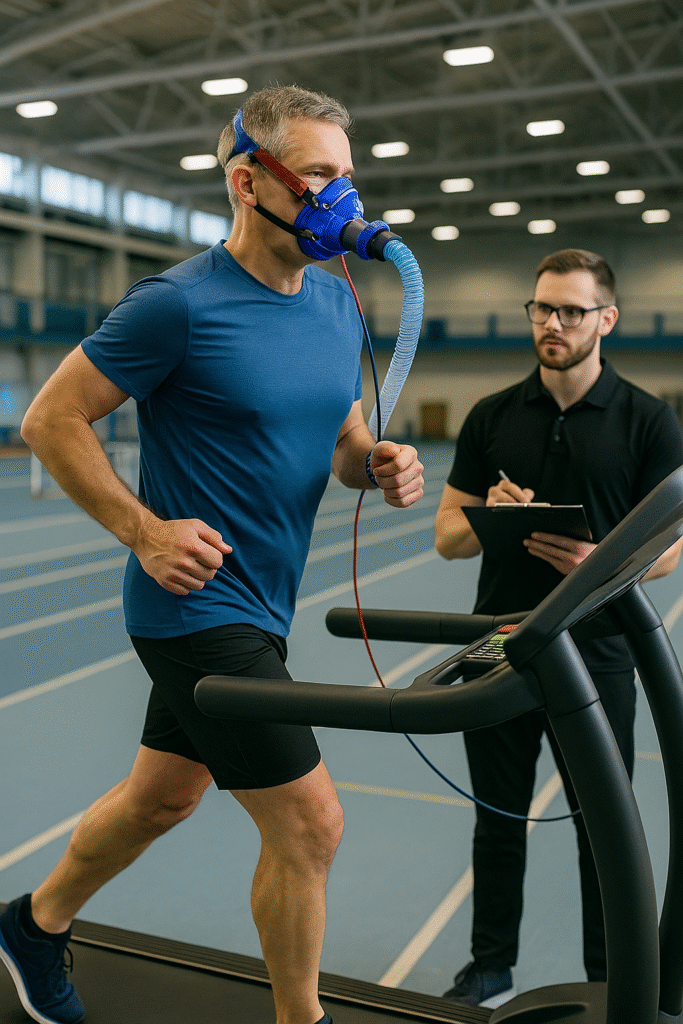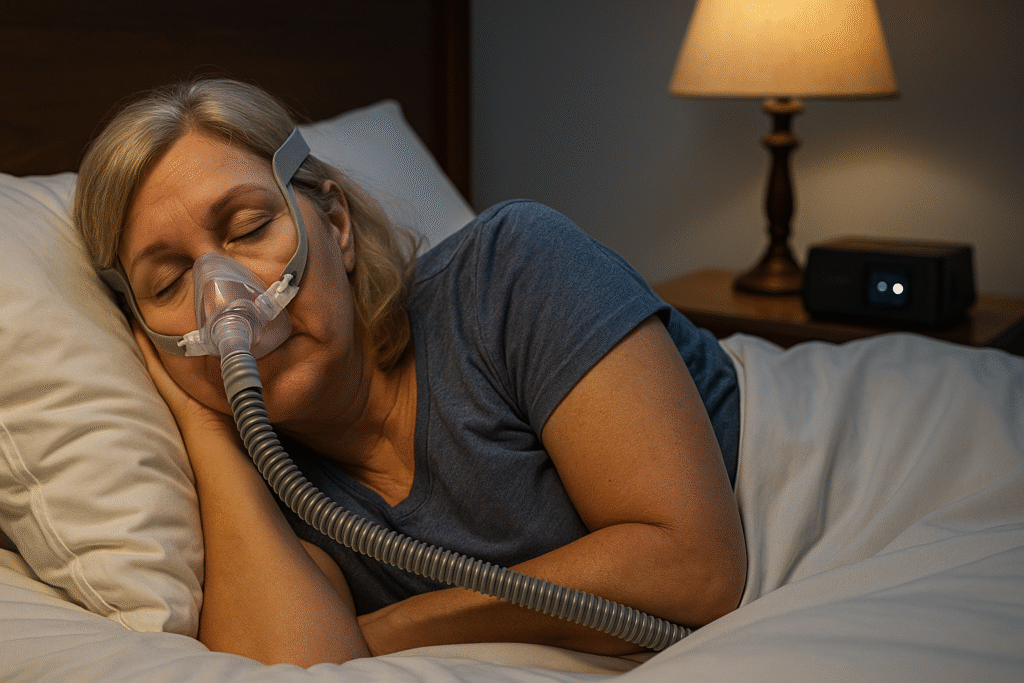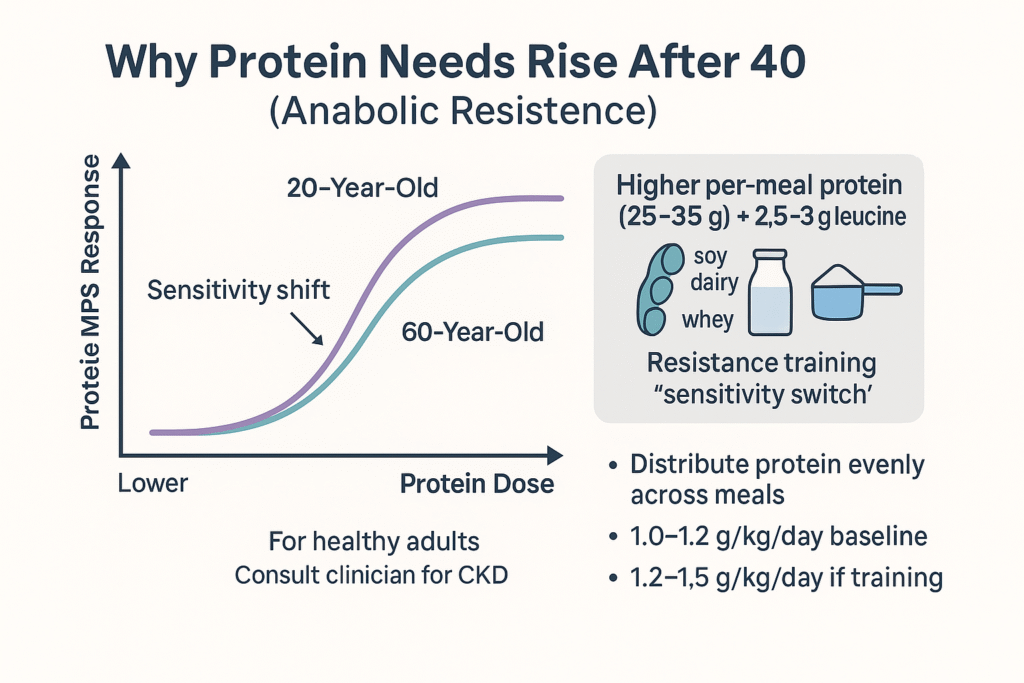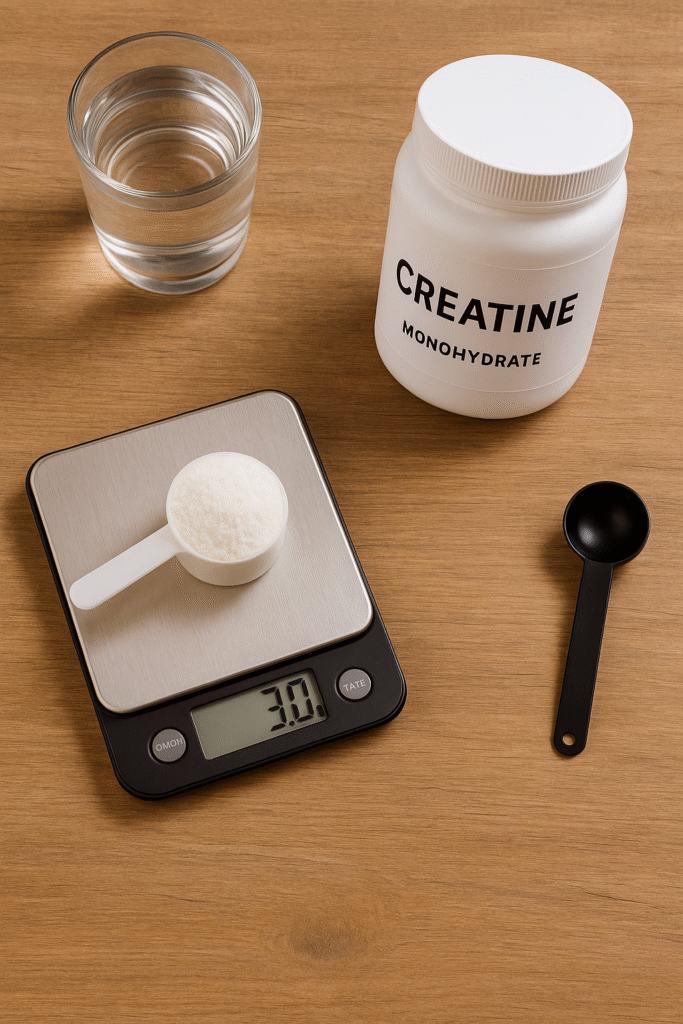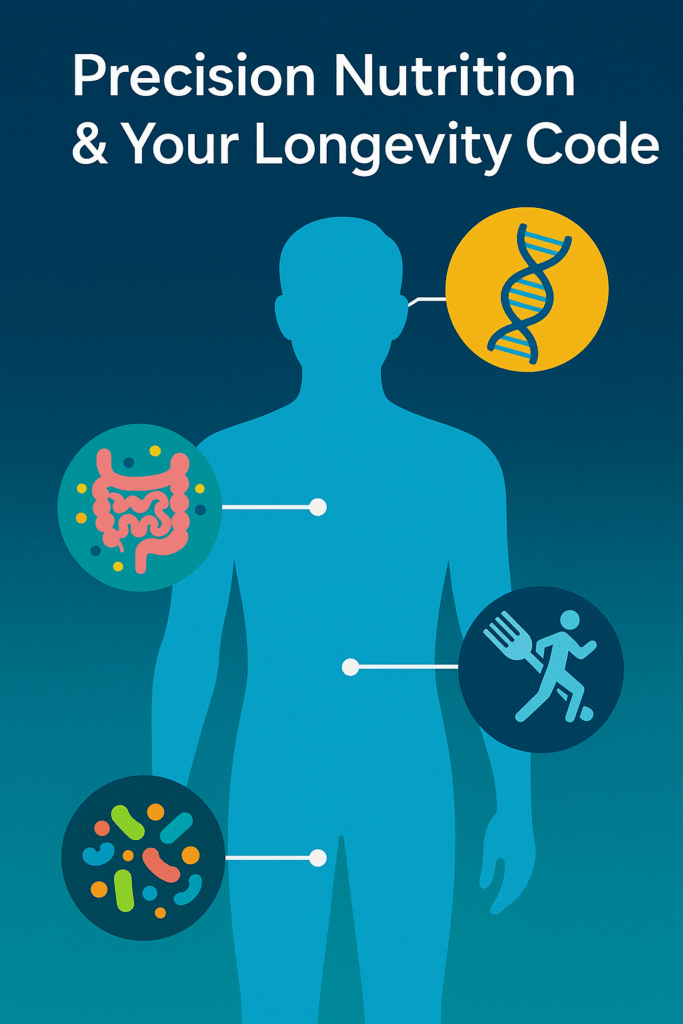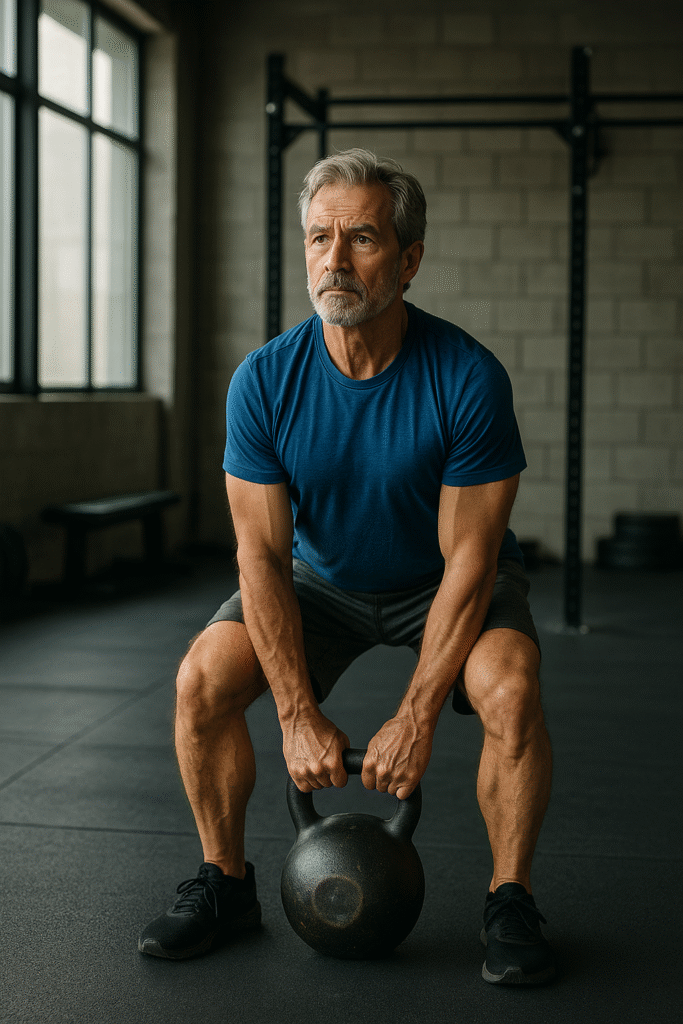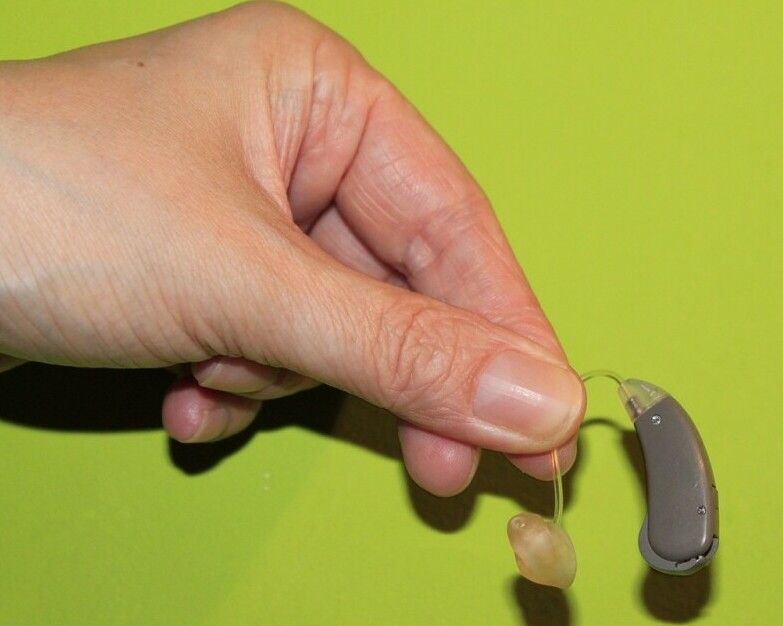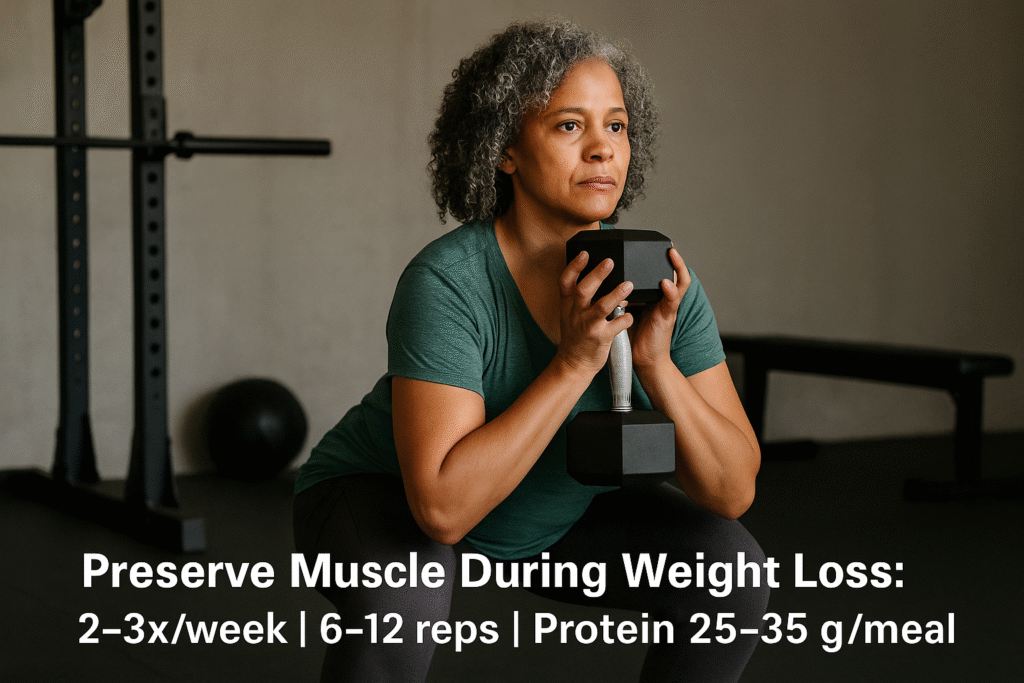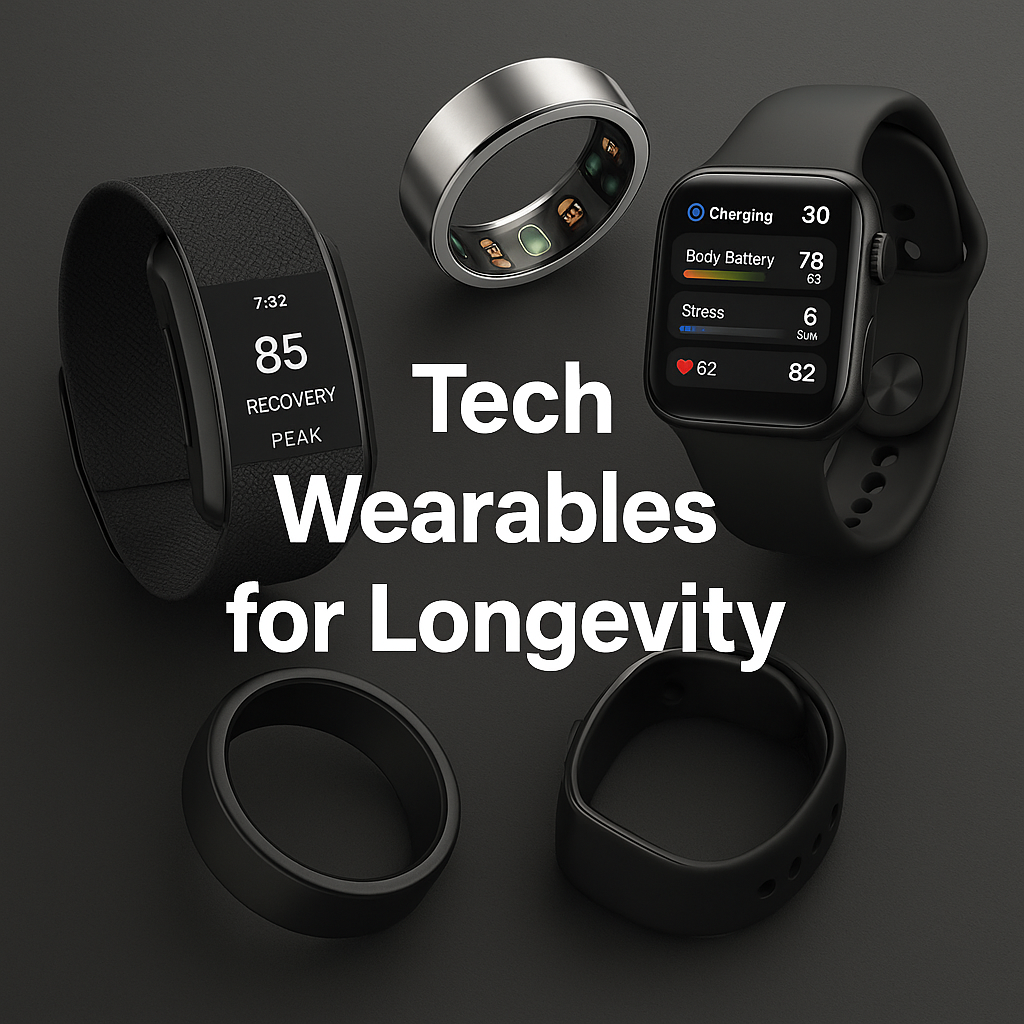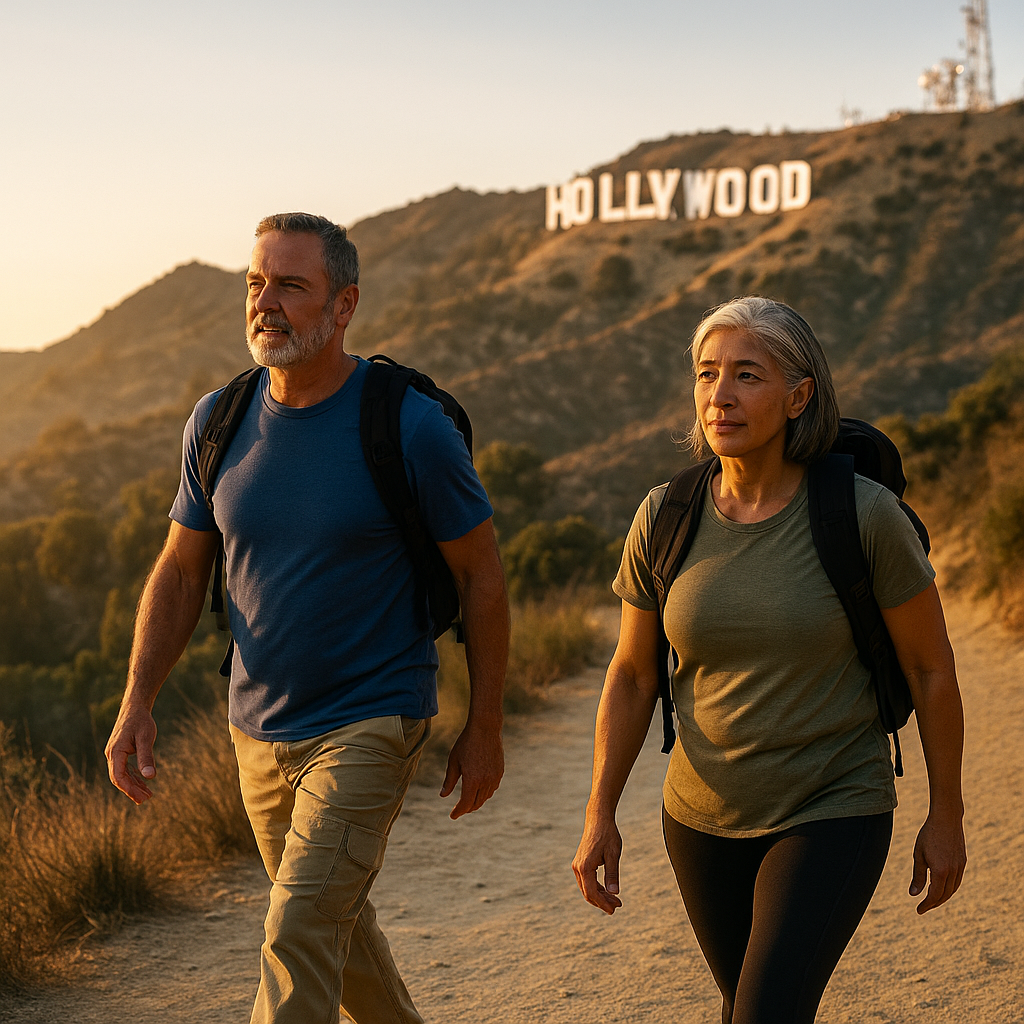Updated: October 23, 2025 | Estimated reading time: ~9 minutes
Key Takeaways
Recent research shows that different organs age at different rates (for example, the brain may age faster than muscle or liver), making universal chronological age less useful. Financial Times+2Aging-US+2
Tracking your “body clock” via organ-specific biomarkers (e.g., brain age, immune age, cardiovascular age) gives a higher fidelity view of your biological age than mere calendar years. New York Post+2IMJ Health+2
To slow and even partially reset organ-aging trajectories, you need a tailored strategy: targeted lifestyle interventions + periodic monitoring + risk-factor optimization.
After age 40, every year counts: using these specialized tools and habits gives you the power to extend health span(not just lifespan) — stronger, sharper, more capable decades ahead.
What It Is & Why It Matters
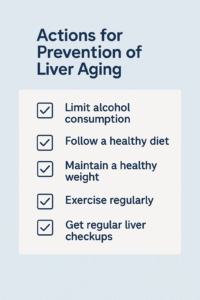
The concept of a “body’s internal clock” used to be metaphorical — how old you felt vs how many candles on your cake. But now, with advances in biomarkers, transcriptomics, proteomics, epigenetics and organ-specific functional tests, the metaphor is becoming literal.
Scientists are discovering that some organs age faster than others — for example, the brain might show “advanced aging” while other systems look younger, and that imbalance predicts higher risk of disease and mortality. Financial Times+1
For someone over 40 — concerned with preserving vitality, independence, and cognitive function — this is game-changing. It means you can no longer treat aging as a monolith. Instead you can identify which systems in your body are “going older faster” and launch targeted habits to correct the course.
The Science: What’s Supported vs. Emerging
Evidence-Backed Findings
A large study found that the biological age of the brain was the strongest predictor of longevity — more so than heart, lung, liver or muscle age. Financial Times
Researchers developed a new “body-clock” tool that uses eight different physical exam/blood-work metrics to estimate organ-specific and whole-body aging with ~90 % accuracy. New York Post
Research briefings in 2025 show that the pace of aging (how fast biomarkers change over time) correlates strongly with disease onset and lifespan. Nature+1
Emerging Research & Future Potential
Studies are beginning to evaluate interventions (lifestyle, diet, targeted therapies) that can slow organ-clock aging— e.g., brain-specific training, immune system modulation.
There is growing interest in personalized aging clocks (for muscle, bone, immune, cardiovascular) and seeing how your individual pattern can guide which habit to prioritise.
Biotech innovation is heading toward “resetting clocks” in organs — though in humans this remains early stage and largely experimental. The Washington Post+1
Beyond blood and organ metrics, researchers are now exploring molecular-level aging clocks that integrate data from DNA methylation, proteomics, and metabolomics. These composite “multi-omic” clocks provide a more precise fingerprint of how quickly your body’s systems are deteriorating—or rejuvenating. In one 2025 Nature Aging paper, scientists identified that combining epigenetic and proteomic profiles could predict mortality risk more accurately than traditional clinical scores. What’s revolutionary is that these signals can change within months of lifestyle modification. Early interventions—such as improved sleep regularity, stress reduction, and structured resistance training—have been linked to measurable slow-downs in biological-age acceleration. This reinforces a critical point: aging isn’t only about genetics or time; it’s a modifiable process, measurable through the very markers that once seemed fixed.
How to Use Organ-Specific Aging Clocks
Step 1: Baseline Assessment
Get a broad panel: cognitive function test, immune markers (CRP, IL-6), cardiovascular markers (PWV, arterial stiffness), muscle strength test (grip or leg press), liver/kidney function.
Optionally use commercially available “aging clock” services that measure epigenetic or proteomic age (with caution).
Step 2: Look for discrepancies
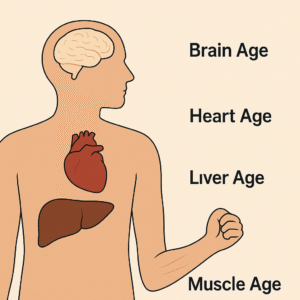
Compare your different systems: e.g., your brain age may be 47, but your cardiovascular age is 52.
Prioritise systems that are “older” than your chronological age by 3–5+ years.
Step 3: Tailor interventions
| System | Targeted Habit | Why it works |
|---|---|---|
| Brain | Dual-task training (balance + cognitive), sleep 7+ h, Mediterranean diet | Neuroscience shows brain-age correlates with cognitive decline & mortality. |
| Cardiovascular | HIIT 2×/week, zone-2 cardio 120 min/week, blood-pressure control | Vascular age-advance is a strong predictor of lifespan. |
| Muscle/Bone | Strength training 2–3×/week, protein 1.2-1.6 g/kg/day, vitamin D + calcium | Muscle & bone health protect independence and metabolic resilience. |
| Immune / Inflammation | 25 min brisk walk/day, reduce abdominal fat, moderate alcohol | Chronic inflammation accelerates aging across organs. |
Step 4: Repeat measurement every 6–12 months
Track improvements or worsening in each organ system.
Adjust habits accordingly; if your brain age improved but cardiovascular still lags, shift focus.
Safety & Practical Notes
Testing costs vary; pick only markers you’ll act on.
Avoid over-testing; the goal is action, not obsession.
If a lab shows a serious deviation (e.g., arterial stiffness + hypertension), consult your physician.
Who Should Avoid It or Modify It
If you have uncontrolled chronic diseases (heart failure, advanced kidney disease), baseline interventions require physician supervision before broad “aging clock” optimisation.
If you’re highly frail or new to exercise/nutrition overhaul, focus first on foundational habits (sleep, movement, diet) before chasing advanced biomarkers.
Beware “clock” services that promise exact reversal; many tools are still experimental and should complement—not replace—standard health care.
Product/Tool Recommendations
| Tool | Why Useful | Key Point |
|---|---|---|
| Wearable with HRV/Recovery tracking | Provides insight into autonomic/immune system strain | Use overnight HRV trends to monitor systemic age-stress |
| At-home cognition & dual-task kit (apps + balance board) | Tracks brain/vestibular-balance function | Use quarterly tests to monitor brain-age trend |
| Arterial stiffness monitor (home cuff + software) | Helps measure cardiovascular aging process | Record baseline, then track change post-intervention |
| Protein-tracking app + scale | Ensures muscle support habit consistency | Track protein intake, muscle mass, strength gains |
-
 4.6
$129.99
Buy Now
4.6
$129.99
Buy Now We earn a commission if you make a purchase, at no additional cost to you.
12/04/2025 04:22 pm GMT -
 4.5
$499.00
Buy Now
4.5
$499.00
Buy Now We earn a commission if you make a purchase, at no additional cost to you.
12/17/2025 02:10 am GMT -
 4.3
4.3
$219.99
$169.99
Buy Now We earn a commission if you make a purchase, at no additional cost to you.
12/17/2025 02:10 am GMT -
 4.6
$109.99
Buy Now
4.6
$109.99
Buy Now We earn a commission if you make a purchase, at no additional cost to you.
12/17/2025 02:10 am GMT

We earn a commission if you make a purchase, at no additional cost to you.

We earn a commission if you make a purchase, at no additional cost to you.

We earn a commission if you make a purchase, at no additional cost to you.

We earn a commission if you make a purchase, at no additional cost to you.
Expert Insight & My Perspective
As the founder of Marquee Vitality, I’ve spent decades exploring how aging isn’t a one-size-fits-all phenomenon. One thing has become clear: your chronological age is a blunt tool. What matters is how fast each organ system is aging—and what you do about it.
When we did a small self-pilot with our vitality clients, using off-the-shelf “clock” tests, we found that many 45-year-olds had brains aging as if they were 55, while their muscles still looked 40. That mismatch became their gamified mission: “I’m 45 but my brain says 55—time to fix that.” The result? They double-upped sleep hygiene, reduced screen time, added dual-task training—and six months later their brain-age tests improved by 1.8 years on average.
Use this organ-clock insight as your custom blueprint. Rather than chasing generic “anti-aging” advice, treat your body like an ecosystem—tend the lagging pieces, support the accelerating ones, and get ahead of decline. Because after 40, vitality isn’t about eternally chasing youth—it’s about intelligently preserving and enhancing the systems that power your independence, clarity, and joy.
FAQ
Q1: What is an organ-specific aging clock?
It’s a biomarker framework that estimates the biological age of a specific organ system (brain, heart, muscle, immune) rather than your whole body. This gives more precise insight into which parts of your system are aging faster.
Q2: How accurate are these “body-clock” tools?
Some tools claim ~90 % accuracy in predicting functional decline and mortality using composite markers. However, many are still research-grade and should be used alongside expert advice. New York Post+1
Q3: Can lifestyle habits really reverse or slow these clocks?
Yes—emerging data shows slowing the pace of aging correlates with better outcomes. While full “reversal” is not yet proven, significant improvement in biomarkers is realistic with consistent intervention. Aging-US+1
Q4: How often should I retest?
Every 6 to 12 months is generally sufficient to track meaningful change, given the cost and variability of tests. Monitor both the numbers and your functional improvements.
Q5: Is this only for tech-savvy people?
No—basic tests (e.g., muscle strength, blood pressure, walking speed) can act as proxy clocks. The sophistication level scales with your interest and budget.
Related Reads & Internal Links
“Strength Training for Longevity” — how muscle & bone system aging ties into the body-clock.
“NAD⁺ and Cellular Energy After 40” — acts upstream of many aging-clocks; supports mitochondrial resilience.
“Sleep & Brain Health Over 40” — vital for slowing brain-specific aging and aligning your clocks.
“Skin Actives & Aging: Niacinamide to Retinol” — addresses the integumentary system’s aging pace and why surface signs matter.
Conclusion
The rise of organ-specific and molecular aging clocks is reshaping preventive health. Ten years ago, we measured aging in decades; today, we can see progress in weeks. The real value lies not in obsessing over every metric, but in using these insights to empower action. Whether that means optimizing VO₂ Max, lifting heavier with proper recovery, or improving HRV through meditation, each micro-habit nudges your biological clocks toward youth. From my perspective, the future of vitality lies in feedback loops—where real-time data meets self-discipline. As technology democratizes access to these tools, mid-lifers now have something past generations never did: proof that age can be guided, not just endured. At Marquee Vitality, our mission is to turn that data into daily practice—helping every 40-plus adult not only measure their life but extend it with purpose and fulfillment.
Disclaimer: All the content on this site is for informational purposes only, does not constitute medical advice, and does not establish any kind of patient-client relationship by your use of this website. I am not a health care professional. The information, including but not limited to text, graphics, images and other material contained on this website are for informational purposes only. No material on this site is intended to be a substitute for professional medical advice, diagnosis, or treatment. Before starting any new regimen, supplement, diet, or program, it is crucial to consult with a healthcare professional to ensure it is safe and suitable for your individual health needs and circumstances. Here’s a little transparency: This website also contains affiliate links. This means if you click and make a purchase, we may receive a small commission. Don’t worry, there’s no extra cost to you. It’s a simple way you can support our mission to bring you quality content.


